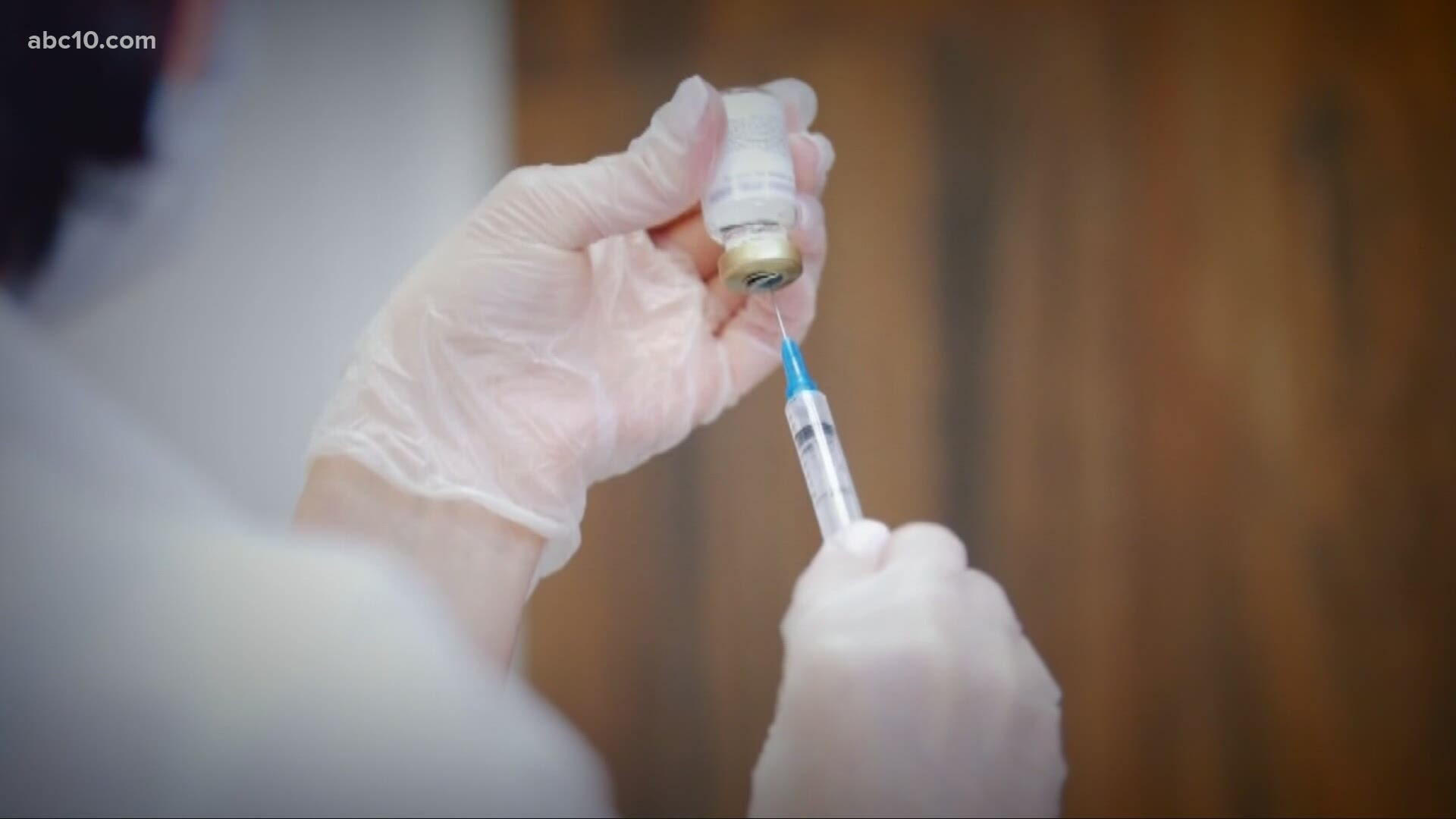SACRAMENTO, Calif — Latinos in California have borne the brunt of the coronavirus pandemic and account for 55% of California's 3.4 million cases.
"With COVID-19, what we know communities of color and low-income communities have experienced a disproportionate share of both cases and severe cases and even deaths," California Pan-Ethnic Health Network Director Kiran Savage-Sangwan said. "And so an equitable vaccine roll-out needs to focus on those communities first."
California Governor Gavin Newsom said that the vaccination rollout would be equitable. Before releasing the data to show who was getting the vaccine, he acknowledged the state wasn't meeting its goal yet.
The data released by the California Department of Public Health showed people who identified as White received the vaccine at the double the rate of people identifying as Latino.
Savage-Sangwan and Health Access California Director Anthony Wright both said the vaccination rollout prioritization played a role in why we are seeing the rates of vaccination favor people identifying as white.
"As a state and, frankly, as a nation, we prioritized health care workers and folks in nursing homes, and by definition, that is going to skew in a certain direction in regards to race and ethnicity and other issues," Wright said. "As we start to broaden to include essential and exposed workers, then that should have some level of effect."
According to the Univerisity of California Berkeley's Labor Center, around 41% of registered nurses identify as White while 15% identify as Latino. The California Health Care Foundation found that 32% of physicians identify as White while only 5% identify as Latino.
The CDC reports roughly 75% of people living in nursing homes identify as White while just over 5% identified as Latino.
Savage-Sangwan added that the percentage of people identifying as other or unknown was also something health advocates were not expecting to see in the vaccine equity data.
How can California improve its vaccine rollout?
With the help from President Joe Biden's administration, Newsom has set up several mass-vaccination sites with the hope of addressing equity.
While these sites are great, Wright said more efforts need to be made in the communities where people struggle with time, transportation, and technology literacy.
"The key thing we need to do to have an equitable and efficient rollout is to be in the communities that represent the diversity of California," Wright said. "It is not enough to do it at these mass vaccination sites, which are very important."
Time, transportation and technology are often barriers for people in communities of color, Wright said.
"If you have to go through an online portal or have to wait through a phone tree that is going to disadvantage others who may not have the same time or technical literacy or other abilities to go through that system," Wright said.
Wright said some ways the vaccination process could improve include:
- Hosting vaccination clinics at times outside of the traditional workday, 9-to-5.
- Possibly going door-to-door to work to vaccinate vulnerable communities.
- Having more pop-up clinics in disadvantaged communities.
Ultimately, California needs more vaccine doses, and Wright said people who are disadvantaged need to be persistent in getting the vaccine and protecting their community.
As of Feb. 18, California reported roughly 8.7 million doses had arrived in the state, and roughly 6.7 million of those doses had been administered. Around 15 million people are currently eligible to receive the coronavirus vaccine in California.
WATCH ALSO: Vacaville woman fought COVID for over a month in the hospital, but her bill was over $40,000



















